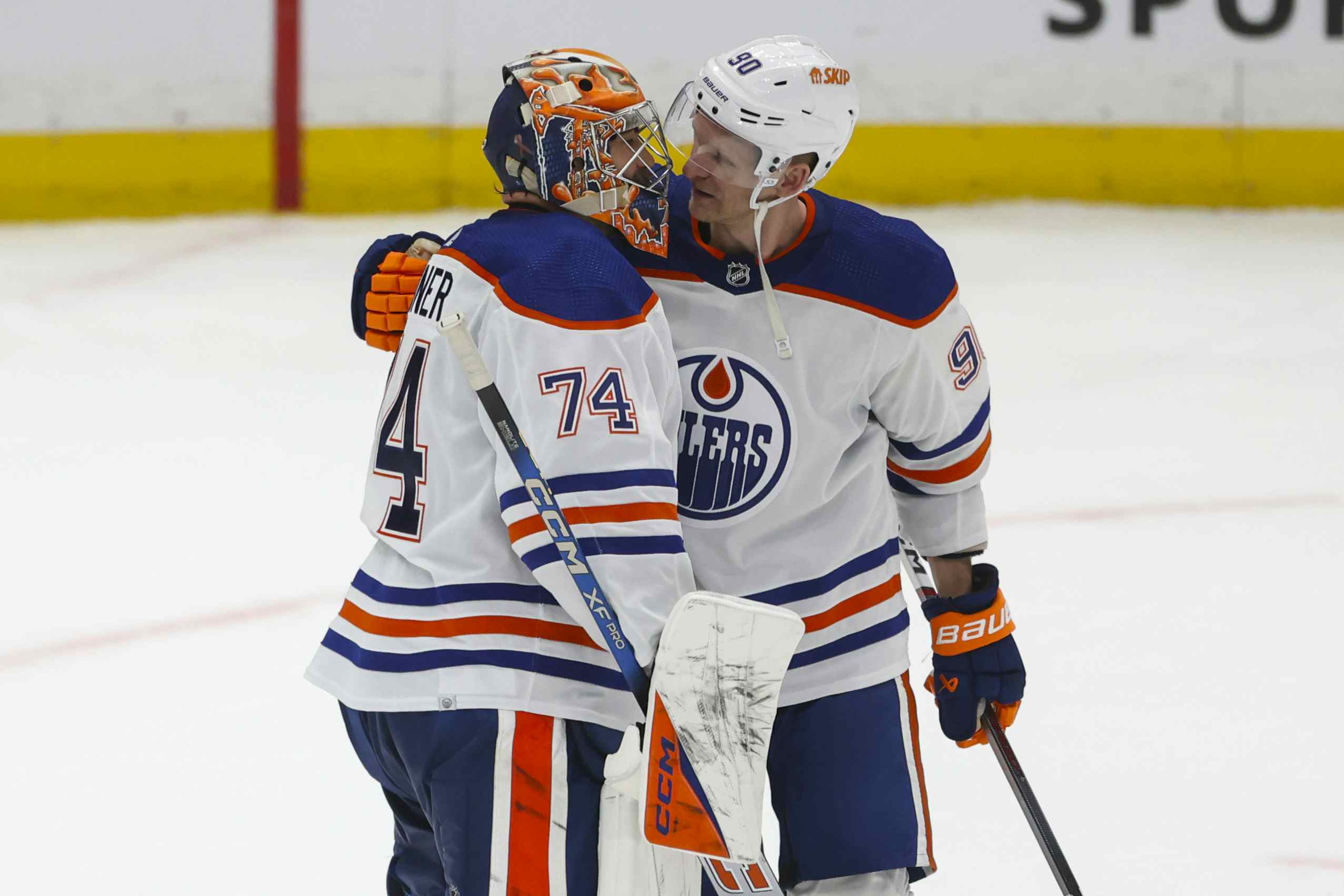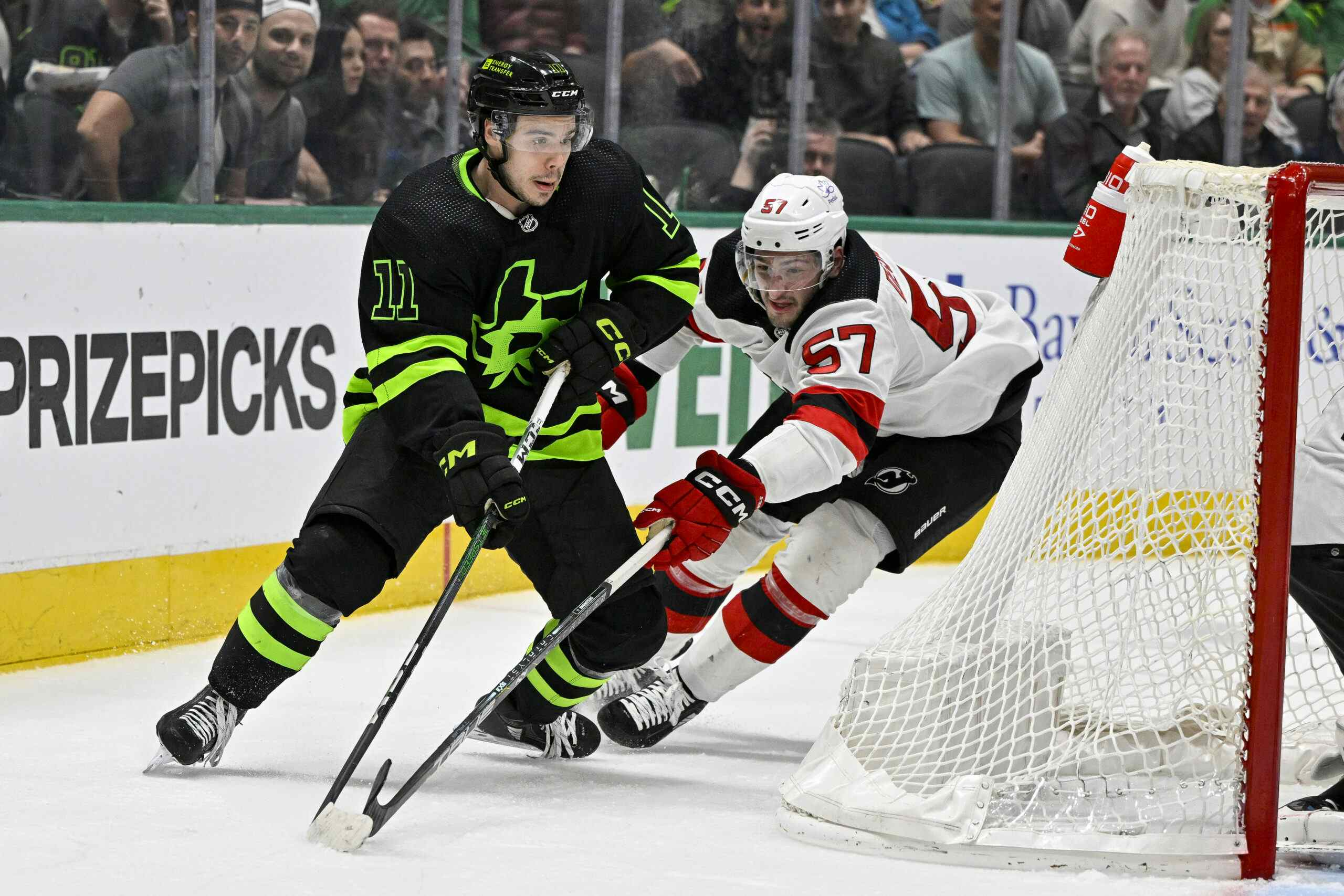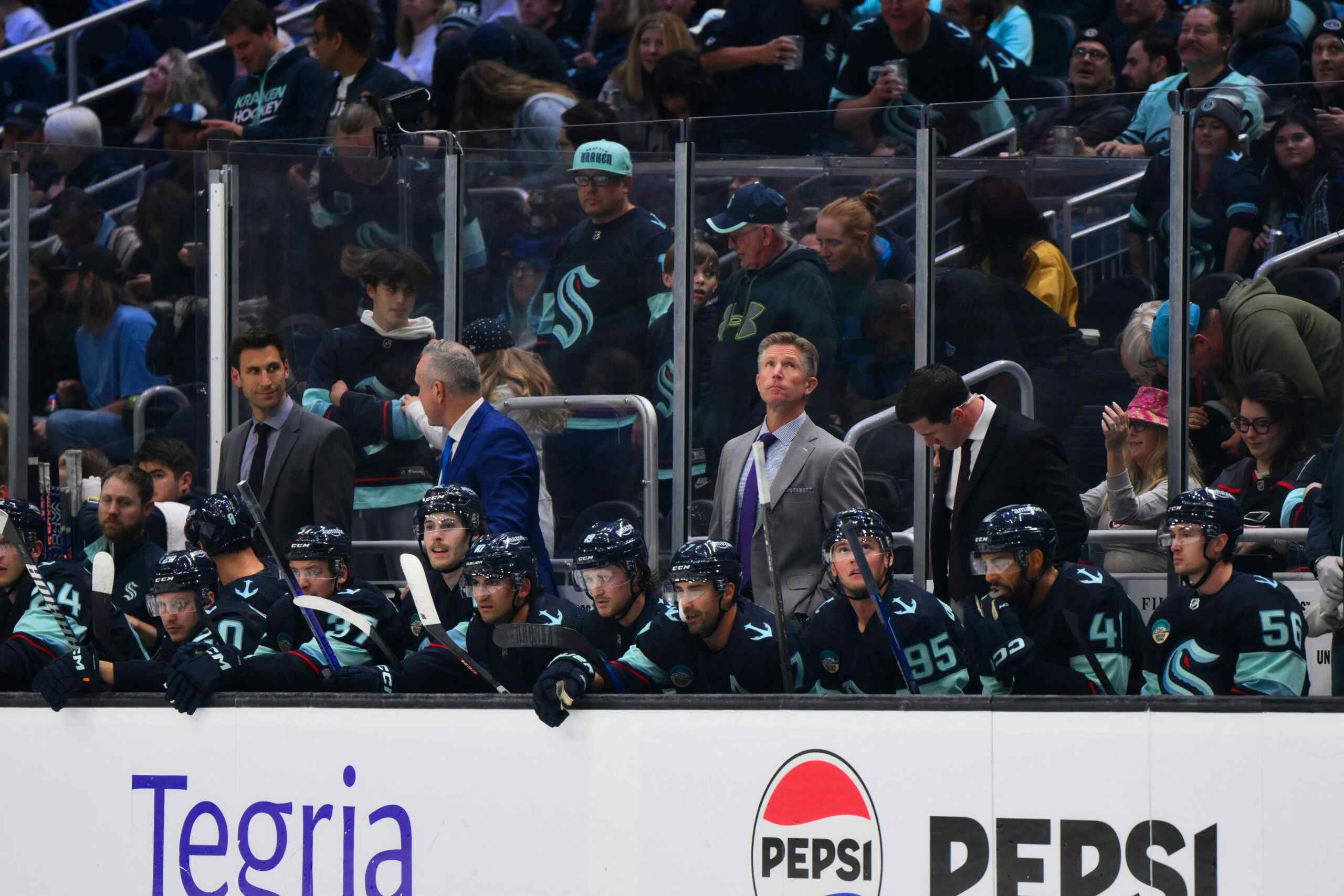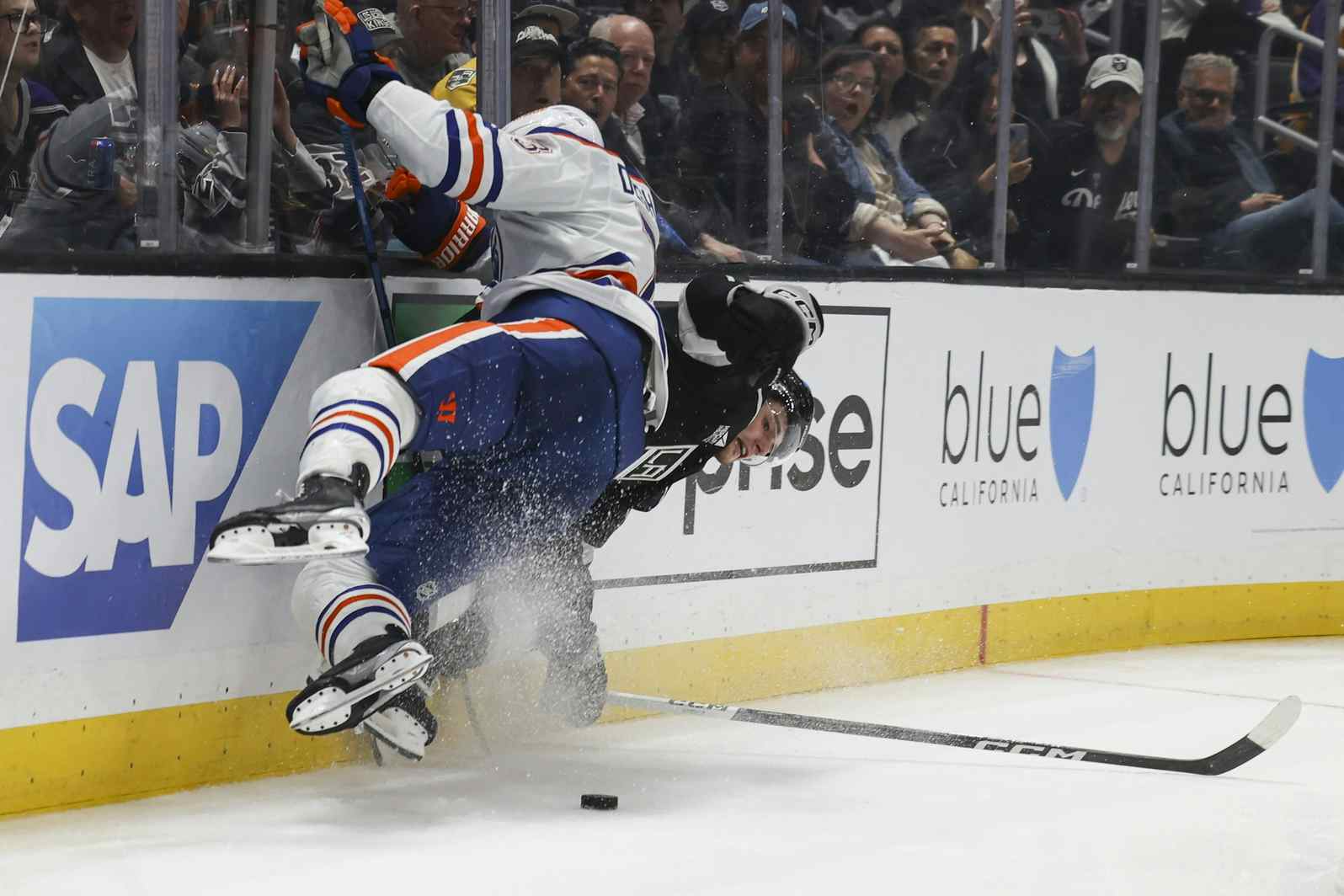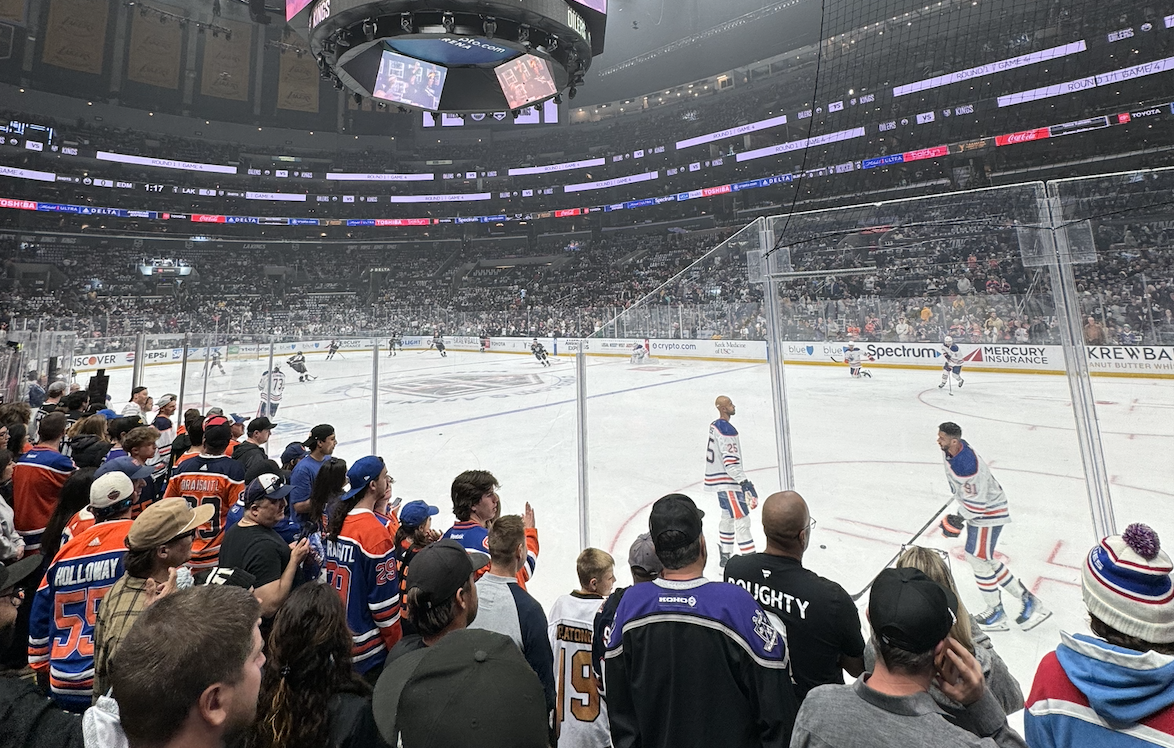In Gordon’s Absence

This summer the Oilers traded away their 4th line
centre, and by doing so they all but guaranteed that many of their forwards
will be deployed differently in the fall.
centre, and by doing so they all but guaranteed that many of their forwards
will be deployed differently in the fall.
It may seem ridiculous to read, perhaps as ridiculous as it
feels to write, but there’s no denying that Boyd Gordon played a relatively
unique role not just on this team but in the NHL. His loss, even though he occupied a role on the 4th line, will impact the Oilers substantially.
feels to write, but there’s no denying that Boyd Gordon played a relatively
unique role not just on this team but in the NHL. His loss, even though he occupied a role on the 4th line, will impact the Oilers substantially.
The story on Boyd Gordon is all about usage. He is a defensive zone specialist. He brings limited offense (career high of 29 points), but he
is a faceoff machine. While the evidence points to faceoff wins as
relatively unimportant in the bigger picture with regards to possession, the
15-20 seconds immediately after a puck is dropped it can mean a lot. You don’t need
to give a hoot about advanced stats to know that if you are in your own zone,
and the opposition has put their top line out there, it is going to be important
to keep the puck away from them and get out of the zone.
is a faceoff machine. While the evidence points to faceoff wins as
relatively unimportant in the bigger picture with regards to possession, the
15-20 seconds immediately after a puck is dropped it can mean a lot. You don’t need
to give a hoot about advanced stats to know that if you are in your own zone,
and the opposition has put their top line out there, it is going to be important
to keep the puck away from them and get out of the zone.
That starts with the faceoff.
During Boyd Gordon’s two seasons as an Oiler nobody was put on the ice for more defensive zone draws at even strength. That’s
not anecdotal. It’s a fact. During that time the Oilers sent Gordon over the
boards to diffuse those dangerous situations a total of 1146 times. The next closest NHL
player was Paul Gaustad at 987 times.
not anecdotal. It’s a fact. During that time the Oilers sent Gordon over the
boards to diffuse those dangerous situations a total of 1146 times. The next closest NHL
player was Paul Gaustad at 987 times.
Naturally, that kind of deployment continued on the penalty
kill as well. Among the most used penalty killers in the NHL over the last two seasons, Boyd Gordon was again number one in defensive zone starts. You expect a
high proportion of DZ starts when killing a penalty, but his dominance in that
category should start to make us wonder who will take all those faceoffs now
that Gordon is gone.
kill as well. Among the most used penalty killers in the NHL over the last two seasons, Boyd Gordon was again number one in defensive zone starts. You expect a
high proportion of DZ starts when killing a penalty, but his dominance in that
category should start to make us wonder who will take all those faceoffs now
that Gordon is gone.
The Oilers will most likely run RNH, McDavid, Lander, and
Letestu down the middle next year and I wanted to show how abnormal Gordon’s
usage was to reinforce that absorbing his faceoffs is not something to be
scoffed at. I wanted to show just how often these players were being used on
the dot last season in a per 60 basis. There’s no advanced math at all. It’s
just total Even Strength Faceoffs (ESF) divided by total Even Strength minutes
(ES mins) and multiplied by 60. The Letestu numbers obviously come from his
deployment in Columbus. I’ve also included their percentage of 5v5 starts in
the defensive zone out of the possible offensive, neutral, and defensive zone
starts. Finally I included their even strength faceoff percentage (ESFO%) from the 2014-2015 season.
Letestu down the middle next year and I wanted to show how abnormal Gordon’s
usage was to reinforce that absorbing his faceoffs is not something to be
scoffed at. I wanted to show just how often these players were being used on
the dot last season in a per 60 basis. There’s no advanced math at all. It’s
just total Even Strength Faceoffs (ESF) divided by total Even Strength minutes
(ES mins) and multiplied by 60. The Letestu numbers obviously come from his
deployment in Columbus. I’ve also included their percentage of 5v5 starts in
the defensive zone out of the possible offensive, neutral, and defensive zone
starts. Finally I included their even strength faceoff percentage (ESFO%) from the 2014-2015 season.
Gordon 880 ESF. 708 ES mins. 75.6 F/60, 58.6% DZ, 58.1 ESFO%
RNH 1132 ESF. 1237 ES mins. 54.9 F/60, 22.1% DZ, 44.3 ESFO%
Letestu 494 ESF. 549 ES mins. 54.0 F/60, 37.1% DZ, 55.2 ESFO%
Lander 385 ESF. 459 ES mins. 50.3 F/60, 32.4% DZ, 51.9 ESFO%
McDavid – unknown
TOUGH MINUTES….

Boyd Gordon’s usage is obviously unique among the bunch. For
example, he is the only one to have taken more faceoffs than he did play
minutes at even strength. The rate at which he took faceoffs is almost 40%
higher than Ryan Nugent-Hopkins. He also spent an extremely disproportionate
amount of time in the defensive zone and dominated the field in actual faceoff
winning percentage.
example, he is the only one to have taken more faceoffs than he did play
minutes at even strength. The rate at which he took faceoffs is almost 40%
higher than Ryan Nugent-Hopkins. He also spent an extremely disproportionate
amount of time in the defensive zone and dominated the field in actual faceoff
winning percentage.
The point I am trying to make (but taking the long way of
getting towards) is that there will be big changes in usage without Gordon in
the lineup. Even if McLellan opts to disperse all those faceoffs, and all of
those defensive assignments between Lander and Letestu, those two players will be
taking on more work than they are accustomed to.
getting towards) is that there will be big changes in usage without Gordon in
the lineup. Even if McLellan opts to disperse all those faceoffs, and all of
those defensive assignments between Lander and Letestu, those two players will be
taking on more work than they are accustomed to.
As for Todd McLellan, he’s also going to find the Oilers
situation down the middle substantially different from what he is used to working
with. The Sharks have had the great benefit of having two of the NHL’s best
faceoff men also be among their top players. Most would argue that
Joe Thornton and Joe Pavelski are indeed San Jose’s best pivots. They consistently
rank above 15th place in the NHL among faceoff leaders and their offensive
prowess is well known. In part (just a part) because of their success in the
dot they can be depended on in the attacking or defending side of the puck.
situation down the middle substantially different from what he is used to working
with. The Sharks have had the great benefit of having two of the NHL’s best
faceoff men also be among their top players. Most would argue that
Joe Thornton and Joe Pavelski are indeed San Jose’s best pivots. They consistently
rank above 15th place in the NHL among faceoff leaders and their offensive
prowess is well known. In part (just a part) because of their success in the
dot they can be depended on in the attacking or defending side of the puck.
In fact, on the same list that has Gordon as number one with a
bullet in total defensive zone starts over the last two seasons, Thornton and
Pavelski are sixth and eighth respectively. Their overall
percentage of DZ starts is much lower than Gordon because they play so much
more than him and in many spots, but there’s no question that McLellan let his
big guns get the Sharks out of trouble situations.
bullet in total defensive zone starts over the last two seasons, Thornton and
Pavelski are sixth and eighth respectively. Their overall
percentage of DZ starts is much lower than Gordon because they play so much
more than him and in many spots, but there’s no question that McLellan let his
big guns get the Sharks out of trouble situations.
Here are the same sets of numbers I provided above but for the
Sharks from last year.
Sharks from last year.
Couture 889 ESF. 1180 ES mins. 45.2 F/60, 31.5% DZ, 48.8
ESFO%
ESFO%
Pavelski 814 ESF. 1256 ES mins. 39.9 F/60, 33.5% DZ, 55.5
ESFO%
ESFO%
Thornton 747 ESF. 1163 ES mins. 38.5 F/60, 34.5% DZ, 58.9
ESFO%
ESFO%
Sheppard 499 ESF. 732 ES mins. 40.9 F/60, 36.9% DZ, 50.3
ESFO%
ESFO%
One thing you’ll notice is that Thornton and Pavelski had a
much lower rate of taking faceoffs than any Oiler centre on the roster this
coming year. They actually played on a line together and split faceoff duty
quite a bit.
much lower rate of taking faceoffs than any Oiler centre on the roster this
coming year. They actually played on a line together and split faceoff duty
quite a bit.
Coming back to the Oilers, Ryan Nugent-Hopkins has also
developed a solid reputation as a defensively conscious player, but his coaches
have preferred to have him start away from the defensive zone. McDavid is going
to be a raw rookie and will need time to develop his skills on the dot. He’ll be a star in this league but he’s still just a skinny
18 year old. Lander is just now establishing himself as an everyday NHLer and
Letestu is pretty clearly a bottom six player.
developed a solid reputation as a defensively conscious player, but his coaches
have preferred to have him start away from the defensive zone. McDavid is going
to be a raw rookie and will need time to develop his skills on the dot. He’ll be a star in this league but he’s still just a skinny
18 year old. Lander is just now establishing himself as an everyday NHLer and
Letestu is pretty clearly a bottom six player.
For the Oilers players who have become accustomed to having
a crutch like Gordon, this coming season is going to be a massive adjustment.
For the new coaching staff, not having the two headed monster of
Thornton/Pavelski is going to be a massive adjustment. I look forward to seeing
how McLellan deploys his lines and who steps up in Gordon’s absence.
a crutch like Gordon, this coming season is going to be a massive adjustment.
For the new coaching staff, not having the two headed monster of
Thornton/Pavelski is going to be a massive adjustment. I look forward to seeing
how McLellan deploys his lines and who steps up in Gordon’s absence.
Recent articles from Matt Henderson

